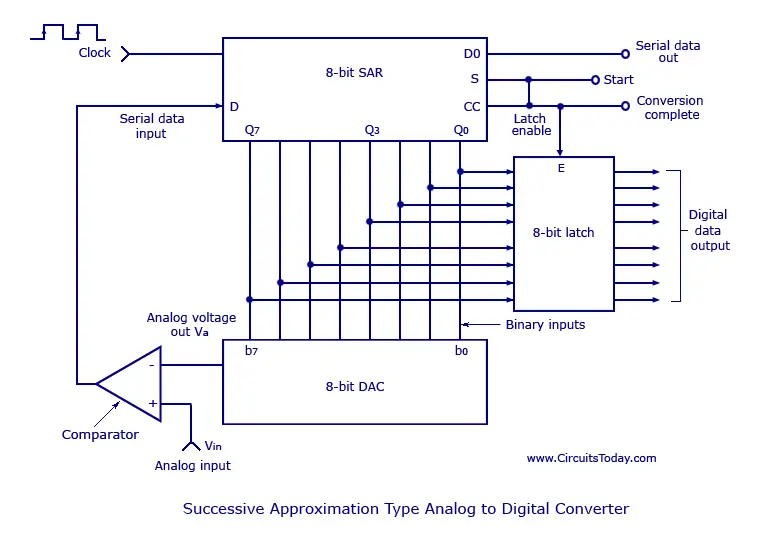
Therefore, we compare the 5V signal to a range of 4-8V, found to be below the midpoint of the range. For example, a 5V input signal is above the midpoint of a 0 – 8V range (midpoint is 4V). These ADCs use a comparator to compare input voltage and the output of an internal digital-to-analog converter, successively judging whether the input is above or below a narrowing range’s midpoint. Successive Approximation (SAR): We can identify these ADCs by their successive approximation registers, which gives them the nickname SAR. On the other hand, semi-flash converters take twice as long as flash converters, though they are still very fast. One flash converter handles the most significant bits while the other handles the least significant bits (reducing the components to 2*2 N/2-1, resulting in 8-bit resolution with 31 comparators). Semi-flash ADC: Semi-flash ADCs work around their size limitation by using two separate flash converters, each with a resolution of half the bits of the semi-flash device.

You can find flash ADCs at use in video digitization or fast signals in optical storage. They require 2 N-1 comparators, where N is the number of bits (8-bit resolution, therefore, requires 255 comparators).

As a result, they tend to be large and expensive compared to other ADCs. They achieve these speeds by running a bank of comparators that operate in parallel, each for a defined voltage range. We can evaluate ADC performance using several factors, the most important of which are:ĪDC Signal-to-noise ratio (SNR): The SNR reflects the average number of non-noise bits in any particular sample (effective number of bits or ENOB).ĪDC Bandwidth: We can determine bandwidth by evaluating the sampling rate – the number of times per second the analog source is sampled to generate discrete values.įlash and Half (Direct Type ADC): Flash ADCs, also called “direct ADCs” are very fast-capable of sampling rates in the gigahertz range. Each ADC architecture has its own distinct strengths and weaknesses. As a result, the analog-to-digital process will always involve a certain amount of noise or error, however small.ĭifferent types of converters achieve this quantization in different ways, depending on their architecture.

We may also share this information with third parties for this purpose.An ADC performs this conversion by some form of quantization – mapping the continuous set of values to a smaller (countable) set of values, often by rounding. We will use this information to make the website and the advertising displayed on it more relevant to your interests. Targeting/Profiling Cookies: These cookies record your visit to our website and/or your use of the services, the pages you have visited and the links you have followed. Loss of the information in these cookies may make our services less functional, but would not prevent the website from working. This enables us to personalize our content for you, greet you by name and remember your preferences (for example, your choice of language or region). Functionality Cookies: These cookies are used to recognize you when you return to our website. This helps us to improve the way the website works, for example, by ensuring that users are easily finding what they are looking for. Analytics/Performance Cookies: These cookies allow us to carry out web analytics or other forms of audience measuring such as recognizing and counting the number of visitors and seeing how visitors move around our website.

They either serve the sole purpose of carrying out network transmissions or are strictly necessary to provide an online service explicitly requested by you. The cookies we use can be categorized as follows: Strictly Necessary Cookies: These are cookies that are required for the operation of or specific functionality offered.


 0 kommentar(er)
0 kommentar(er)
